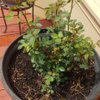RMV on Secret's Out
pat_bamaz7
10 years ago
Related Stories

BEDROOMSThe Right Mattress: The Secret to a Great Night’s Sleep
We spend a third of our lives asleep, so investing in a quality mattress is essential. Check out this expert advice to help you choose yours
Full Story
KITCHEN DESIGNKitchen Recipes: Secret Ingredients of 5 One-of-a-Kind Cooking Spaces
Learn what went into these cooks’ kitchens — and what comes out of them
Full Story
MORE ROOMSShhh ... It's a Secret (Door, Room, Staircase)
Whether you're the cloak-and-dagger type or just want some practical storage, hidden places in the home show their appeal
Full Story
DECORATING GUIDES8 Secrets to Pairing Patterns With an Oriental Rug
Plaids, florals, stripes — a good Oriental rug can stand up to almost any other pattern. These tips can help you master the effect
Full Story
FUN HOUZZFor the Kids: Secret Forts Indoors
When it's too cold for tree houses and playhouses, create a cozy kids' hideaway indoors
Full Story
KITCHEN DESIGNKitchen of the Week: High Function and a Little Secret in Missouri
There’s plenty of room for cooking and a hidden feature too in this flexible, family-friendly kitchen
Full Story
FUN HOUZZSecret Passages and Hidden Spots
What's behind that door — a bar, bath, laundry room or loo?
Full Story
COLORPaint-Picking Help and Secrets From a Color Expert
Advice for wall and trim colors, what to always do before committing and the one paint feature you should completely ignore
Full Story
BATHROOM DESIGNIdea of the Week: Secret TV By the Tub
Hinged frame hides a small TV tucked into a bath-side bookcase
Full Story
GREAT HOME PROJECTSHow to Create a Secret Doorway Behind a Bookcase
Hide your valuables (or unsightly necessities) in a room or nook that no one will guess is there
Full StoryMore Discussions








seil zone 6b MI
pat_bamaz7Original Author
Related Professionals
Fort Lee Landscape Architects & Landscape Designers · Owings Mills Landscape Architects & Landscape Designers · Saint Louis Park Landscape Architects & Landscape Designers · Mooresville Landscape Contractors · Stoughton Landscape Contractors · Wilmington Landscape Contractors · Brownsville Landscape Contractors · College Park Landscape Contractors · Englewood Landscape Contractors · Framingham Landscape Contractors · Mastic Beach Landscape Contractors · McLean Landscape Contractors · Natick Landscape Contractors · Raleigh Landscape Contractors · Santa Maria Landscape Contractorsjerijen
pat_bamaz7Original Author
joshtx
mori1
pat_bamaz7Original Author
pat_bamaz7Original Author
mzstitch
michaelg
rosetom
michaelg
pat_bamaz7Original Author
michaelg
henry_kuska